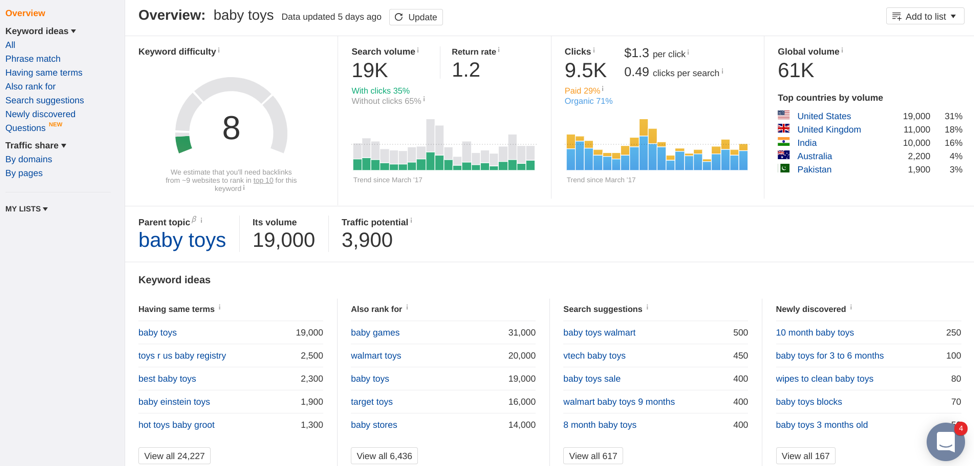

Updated January 3, 2025
If you want your business’s website to be worth the investment, you need to make sure it’s optimized for performance and content. Here are five ways to improve your site’s ranking on the web.
If you have a small business, it’s no longer a question of whether you should have a website — almost every small business either already has a website or plans to have one in the next year.
But simply having a webpage isn't enough unless it's optimized. You need to make sure your website is operating at peak efficiency and effectiveness in terms of how it attracts and directs web traffic, how it funnels visitors to your product or service, the way it loads on every device, and how it appears to the average user.
Looking for a Web Design agency?
Compare our list of top Web Design companies near you
“Optimization” can mean a number of things when it comes to web pages. Here are 5 major things to consider to make your web presence as strong as possible.
Search engine optimization, or SEO, is so important that entire careers are built around the practice. Assuming that you don’t have the budget to invest in hiring an SEO company, there are still some basic techniques you can learn to help boost your page’s visibility in search results:
Knowing SEO techniques will help you rank higher on search engines.
If you use a third-party platform to build and host your website, that platform will handle a lot of the necessary technical grunt work for you. But even so, you should double check these aspects of your website to make sure it’s technically sound (and if you build your website yourself, these are things you should make sure to have):

If the answer to any of the above questions is no, you can use third-party tools and extensions to create a well-designed experience that resonates with both users and search engines.
If your site doesn’t succeed technically, users will become frustrated and move on to a new site.
What is the goal of your website? Is it to convert readers to customers? To inform current customers of upcoming products or sales? To build your social media or email newsletter following?
Whatever goals your site has, they should include a call-to-action (CTA), which encourages website visitors to perform a specific act. This could be to sign up for your newsletter, make a purchase, click to a new page, register for an account – whatever goal you have for your visitors, make it clear with a CTA.
Make what you want out of your visitors obvious with large buttons and quick descriptions. You only have a limited amount of time – perhaps fewer than 15 seconds – to make an impact on a visitor, so make it count.
Give website visitors an easy path to convert.
Connect with your readers by encouraging them to follow you on social media.
Create and populate each major platform that resonates with your audience. Facebook, Instagram, and Twitter are good places to start, though you may find success with Pinterest and LinkedIn as well, among others, depending on your niche. Feature links to those platforms prominently on your page.
In order to entice readers to follow you on social media, add value that can only be accessed by following specific platforms: Release links to certain deals and discounts only on social media, for example.
Having an active, successful social media strategy will, in turn, benefit your website.
Your website should pass the eye test when it comes to what your page offers compared to what your competitors offer. Don’t let your competition outshine you on a purely aesthetic level.
But there are other ways to compete that involve getting a bit more technical. Use a tool such as Ahrefs to see how well your site is ranking on keywords, content, and overall web traffic numbers that are important to your business, and see how well your competitors are doing on those same factors.

Periodic checkups of how your website and/or blog is ranking compared to competitors will help you diagnose issues with your site and see what you could be doing better.
Optimizing your website isn’t a one-time fix. Just as you are constantly looking to improve your business’s offerings to your customers, your website should be no different.
Follow these guidelines to get started on the road to website optimization, but continue to tweak, test, and alter how your site looks and performs to get the most out of your web presence.
 Christine Soeun Choi is an SEO associate at Fit Small Business specializing in digital marketing. Currently based in NYC, she has a background in business studies and math with a passion for business development. When not helping small business owners, Christine enjoys taking photos, exploring artwork, traveling, and spending time with her family.
Christine Soeun Choi is an SEO associate at Fit Small Business specializing in digital marketing. Currently based in NYC, she has a background in business studies and math with a passion for business development. When not helping small business owners, Christine enjoys taking photos, exploring artwork, traveling, and spending time with her family.


